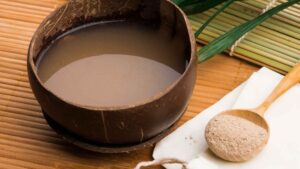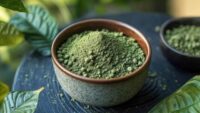Kratom has been used for centuries in Southeast Asia; however, in recent years, it has become immensely popular in America and European countries. It has also become a subject of controversy and sparked intense debate in the West.
Consumers praise it as a natural remedy to treat pain relief, anxiety, and opioid withdrawal; however, critics call it dangerous and addictive. With so many myths revolving around, we have compiled some common myths in this article and busted them one by one.
Myth #1: “Kratom Is Just Like an Opioid”
It is one of the most popular myths and also develops plenty of controversies around kratom. In reality, kratom works differently from traditional opioids. In terms of mechanism of action, kratom’s primary alkaloids, mitragynine and 7-hydroxymitragynine, are partial agonists of mu-opioid receptors, which is different from other opioids like morphine, which is a full agonist.
It provides pain relief without the respiratory depression that most opioids possess. Studies show that kratom has a lower abuse potential than traditional (prescription) opioids. It has some opioid-like effects; however, calling it similar to heroin or oxycodone is misleading.
Myth #2: “Kratom Is Highly Addictive”
This myth is also wild, as in reality, dependency risk exists in kratom, but it is not the same as opioid addiction. Regular users of kratom report mild withdrawal symptoms such as fatigue, irritability, and body aches; however, it is typically less severe than opioid withdrawal.
The National Institute on Drug Abuse NIDA says that kratom does not appear to cause life-threatening addiction like other substances. In most cases, dependency only starts at a very high daily consumption, i.e, 10g+. If kratom is consumed in moderate doses, it does not usually lead to severe addiction.
Myth #3: “Kratom Is Banned Because It’s Dangerous”
The legal status of kratom varies all around the world, including the US. The FDA has tried to schedule kratom as a controlled substance; however, kratom advocates and some lawmakers suggest that more research is needed to conclude that it is a harmful product.
The KCPA (Kratom Consumer Protection Act) has been enacted in many states to regulate the sale and purchase of kratom. The legal status of kratom is more about regulatory uncertainty than proven danger.
It is legal federally in the US, but the FDA has issued warnings. Kratom is banned in 6 states (Alabama, Arkansas, Indiana, Rhode Island, Vermont, Wisconsin). Some cities and counties also have local restrictions in place.
Myth #4: “Kratom Causes Overdose Deaths”
In reality, nearly all reported “kratom caused death” cases involved other drugs. In 2019, a study showed that almost all kratom deaths involved polydrug such as benzodiazepines and fentanyl.
Fatalities due to pure kratom overdose are extremely rare. Animal studies on kratom suggest that a lethal dose is very high, which is above normal consumption. While kratom is not risk-free, death due to overdose is a myth.
Myth #5: “Kratom Is a ‘Legal High’ With No Risks”
This myth is also an exaggerated claim, as kratom is not risk-free, although safe use matters. You can get side effects like nausea, dizziness, and constipation, mainly at high doses. Drug interactions can cause plenty of issues if mixed with alcohol, benzos, or opioids. You should start with a low dose and avoid daily consumption to prevent tolerance. Do not combine with other depressants.
Myth #6: “Europe Banned Kratom Because It’s Deadly”
Some countries in Europe allow kratom consumption and sale. The laws related to legality vary all around. It is banned in the UK, Sweden, Denmark, and Poland, and legal in Spain, Germany, and Italy as a botanical product. The ban on kratom is often due to the lack of research rather than proven harm. The drug association acknowledges the lack of evidence related to severe side effects.
Myth #7: “The FDA Says Kratom Has ‘No Medical Value’”
The FDA stance is very controversial, but research is ongoing to analyse FDA arguments, such as “kratom has opioid properties and should be restricted”. The FDA has also not approved kratom for any medical use. Many scientists argue that more research is needed for this plant before making a final judgment. The National Institute of Health NIH is funding studies on its therapeutic benefits. The FDA’s position on kratom does not show scientific opinion.
Myth #8: “Kratom Is Only Used to Get High”
Most consumers use kratom for wellness, not recreation. In a study in 2020, they found that 90% of kratom users take it for pain relief, anxiety, and opioid withdrawal. Very few of them are using it mainly for euphoria. In Southeast Asian countries, it is traditionally used for energy and pain relief, not as a drug. It also has a wide cultural background.
Final Verdict: What’s True About Kratom?
Kratom is not an opioid but has some opioid-like effects. It has a lower addiction risk compared to other prescribed painkillers. It is legal in most US states, but regulations vary accordingly. It has very limited research to prove the many benefits that people have known for centuries. In kratom, quality matters, which is why one must buy a lab-tested, verified product.
Also, see:






















